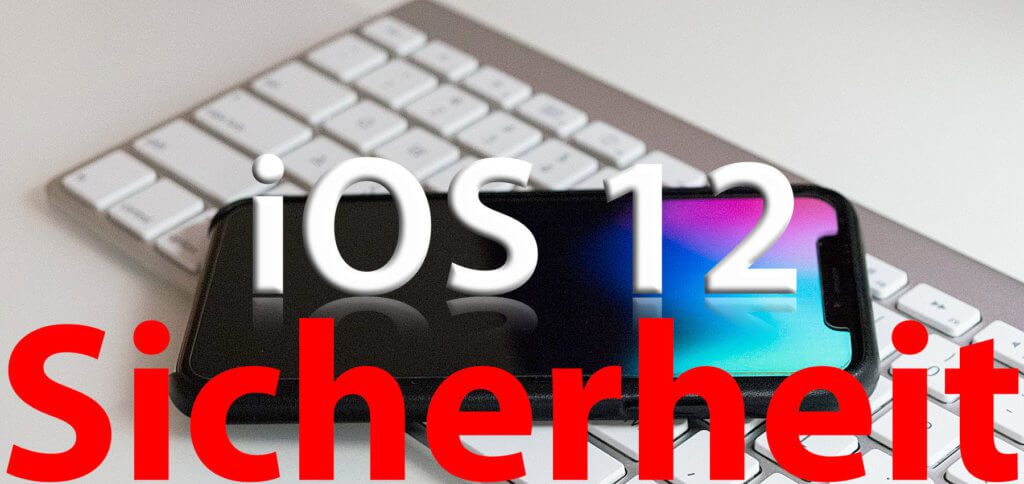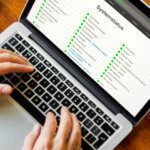The new Apple mobile operating system for iPhone, iPad and iPod Touch is out. Yesterday I already got you guys in connection with it some iOS 12 manuals presented. Today I would like to briefly discuss a few settings that you should know with regard to the security of your device and your data. So take a few minutes after the upgrade and take a look at the security settings of iOS 12 on the i-devices for on the go.

Chapter in this post:
Use two-factor authentication
When setting up your device, you will be asked whether you would like to use two-factor authentication to protect your user account. This means that someone who has your access code cannot get any further, because your device is also required for access. The setting, which existed before, was simplified by an autofill for the password. If you skipped two-factor authentication when setting up the device, you can do it like this:
Settings -> Password & security -> "Two-factor authentication"Activate and then follow the steps shown
Automatic iOS updates
Regardless of whether the operating system from Apple, an Android system or Windows - actually you should always have the automatic updates activated if an appropriate internet connection is possible. Because this is the only way to always get the latest system with blocked security gaps, additional security settings and so on. In the new Apple system for handheld devices, you do this as follows:
Settings -> General -> Software update -> "Automatic updates“Activate
Change and extend the PIN or unlock code
Not just in terms of yours SIM card you should choose a strong PIN number combination, but also for the unlock code for your iPhone. Simply assign a combination of up to six digits (which of course should not be 123456 or 000000). To do this under iOS 12, you don't need any deep menu structures:
- Calls the Settings on
- Vote again Touch ID & password (or. Face ID)
- Enter your previous unlock code
- Then select "Change password" and "Custom numeric code"
- After the change, you are safer on the road
Limited USB mode
The restricted USB mode under iOS 12 ensures that your device only charges the battery when connected to a USB port and prevents data exchange. This serves to protect against hackers and data thieves who operate via public USB charging stations or the like. Set the restricted USB mode under iOS 12 as follows:
- Calls the Settings of the iPhone, iPad or iPod
- Select the menu item Touch ID & password (Face ID on iPhone X, XR and Xs)
- Now enter your unlock code to make security settings
- Scroll down and turn the switch at USB accessories and its connection when the screen is locked From
Tip for the password manager in iOS 12
Under iOS 12 there is also the password manager again, which you can use for the autofill or the automatic login. This saves you having to memorize umpteen passwords or having to carry a corresponding list with you. With the new version of the operating system for iPhone, iPad and iPod Touch, however, the little helper has received an additional function: the password check. This recognizes whether you are using the same password for several services (which is known to be a security risk). So if a change is proposed to you, you can make it as follows:
- Calls the Settings on
- Chooses Password & Account from
- Call now Website & app passwords on
- Enter the unlock code for verification
- In the list of websites and apps you will see a warning where a double PW is used - tap the entry accordingly and select "Change password on website"
Conclusion
With old and new features in iOS 12, you can protect your mobile Apple devices - multiple times and against a wide variety of risks. If you use all of the points mentioned, then your device should be very secure against attacks, hackers, on-site data sniffers and curious relatives;)
My tips & tricks about technology & Apple
Related Articles
After graduating from high school, Johannes completed an apprenticeship as a business assistant specializing in foreign languages. But then he decided to research and write, which resulted in his independence. For several years he has been working for Sir Apfelot, among others. His articles include product introductions, news, manuals, video games, consoles, and more. He follows Apple keynotes live via stream.




![[Update] Overview: Battery capacity (mAh & Wh) of the Apple iPad models](https://a391e752.rocketcdn.me/wp-content/uploads/2024/04/ipad-battery-capacity-mah-wh-150x150.jpg)

![[Update] Which iPad do I have? Here's how to get it out!](https://a391e752.rocketcdn.me/wp-content/uploads/2020/07/ipad-modell-bestimmen-anleitung-150x150.jpg)


